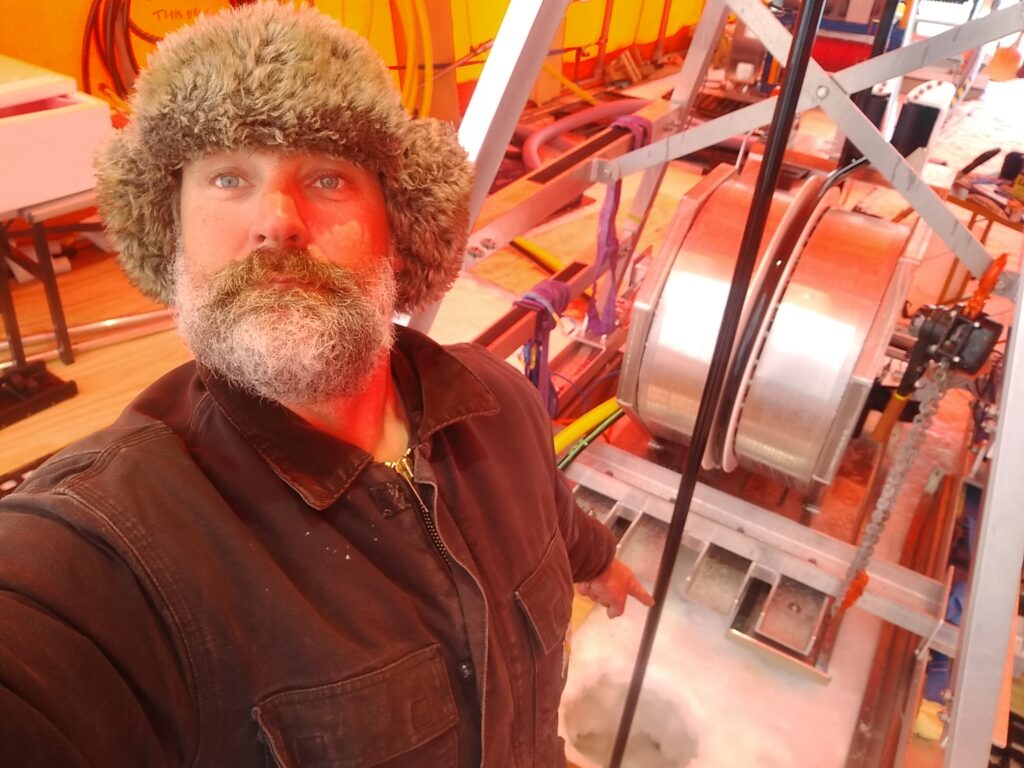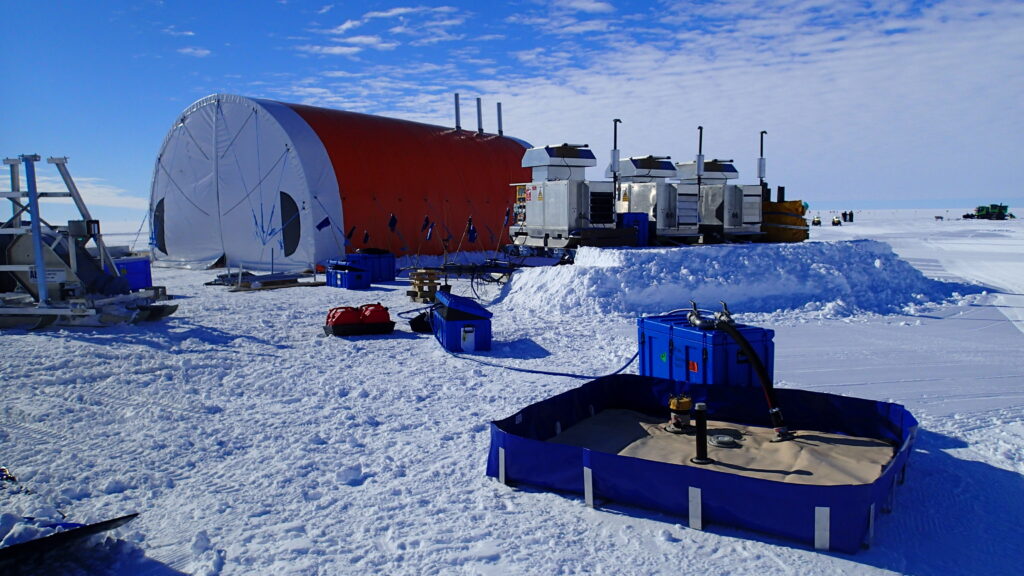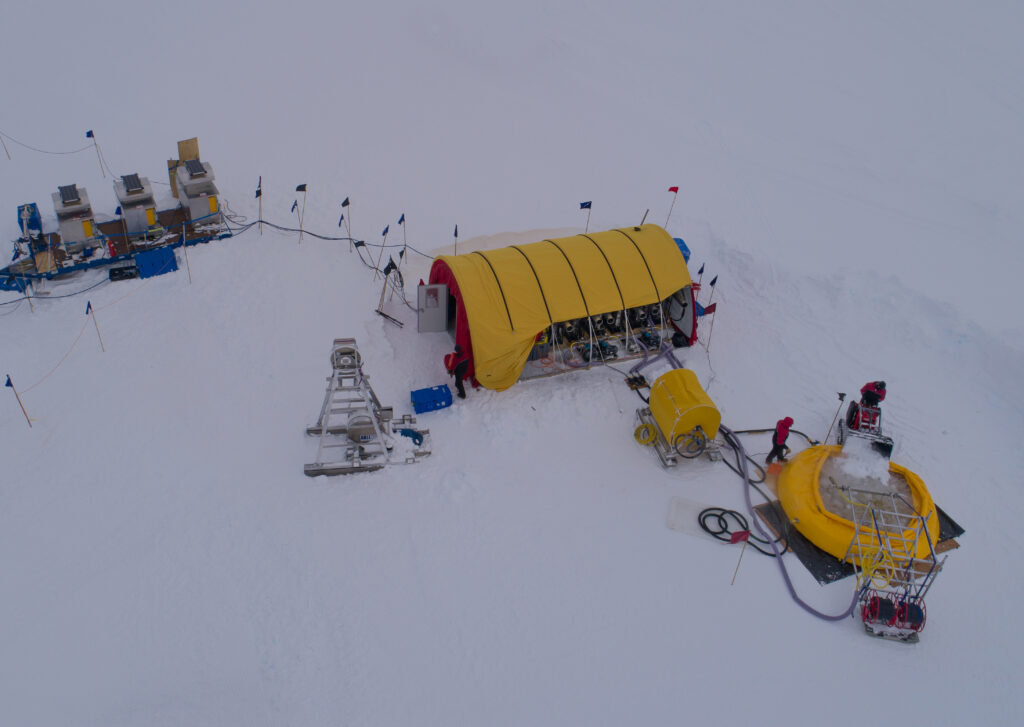From November to late January, home for Darcy Mandeno is the icy expanse of the Antarctic. He swaps his heated, comfy office at the University of Wellington to lead the Science Drilling team that supports researchers to study the sedimentology, glaciology and oceanography of one of the world’s coldest and most inhospitable places.
Darcy is Science Drilling Office Engineering Manager and so he’s the first to arrive at the camp each summer and the last to leave. During that time, it’s his responsibility to ensure the equipment that researchers rely on to carry out their studies keeps working. He and his team also look after equipment that keeps camp life comfortable, like the heating, cooking and communication facilities.

“It’s a challenging job – there’s no other job like it. You know problems will come up and you never know what they will be and you just have to figure out a way of fixing things,” says Darcy.
“The glamour of the Antarctic disappears quite quickly when you are working but it is an extremely beautiful place. There are sublime moments when the generators are turned off and it’s so quiet, or you might be 3km from camp and you can’t see anything – you are standing on a flat sheet of white and think ‘this is my day job!’”
This is Darcy’s tenth summer in Antarctica with the Antarctic Research Centre, a world leading centre that looks at past climate history, ice sheet processes and their impact on the NZ and global climate. Researchers spending summer on the ice use a range of purpose-built equipment that Darcy helps operate and maintain, including ice and hot water drills, winches and GPS surveying tools.
For the past couple of years, he has relied on three DEUTZ generators to power the hot water drill capable of drilling through ice to a depth of 1,000m. Darcy says previous generators tended to lose power by the end of the season as fuel pumps started to wear out.
“The DEUTZ engines are more robust. We ordered them three years ago but this will be only the second season we’ve used them. Because of COVID, the camp last year was canned so the generators were wrapped up and have been sitting on the Ross Ice Shelf for about 12 months,” says Darcy.
“The hot water drill requires generators to run the control systems and pumps with it – it’s like a little industrial plant out in the middle of nowhere. It runs the boiler firing systems and there’s a well pump down the hole to return water to the surface. Making water from snow or ice requires energy and if we can recover some of that and pump it to the surface, that helps
“When we start the season, the temperature can be minus 30 degrees but we know that if the DEUTZ generators are sat on the Ross Ice Shelf over winter where it can get down to minus 60 or minus 70, they will be fine,” he says.
“We ran them for one season and they didn’t miss a beat – our mechanic loved that!”


Reliability and having access to experts who can talk through any issues that arise are key in remote locations. Darcy also relies on Shaw Diesels, an authorised DEUTZ dealer in New Zealand, to suggest a list of spare parts that should be shipped to the Antarctic Research Centre for the summer, too.
“The place is remote so there isn’t much availability of spares if we have system failures,” says Darcy.
“Shaw Diesels and DEUTZ suggests a typical spares inventory and also provides good drawings to help me when I am taking care of the equipment. I also know that I can talk to them and draw on their experience if any issues come up. They know things have to be right – a ‘that will do’ approach doesn’t work in this location. We need that kind of support. If something is broken, we need to sort it out with the right people to find the best thing we can do.”
Darcy has three generators – two are used with the remaining one as a back-up – and they run on AN8, the Antarctic equivalent fuel to NATO fuel JP8 or kerosene-based fuel.
“We can use the same fuel for aircraft, for the heaters that heat the tents and for the generators and this simplifies the products on site. Another fuel type adds another layer of people being able to not get it right,” he says.
“Getting the generators cold started is the biggest challenge. That’s a staged process. We heat up the box the engine is in and heat soak it for an hour or two to make sure everything is free of ice and snow. We let it warm up slowly and then give it a kick in the guts and it fires up.”
When the season comes to an end, Darcy does a full service on each generator. While the generators may not work long hours, they are working in arduous conditions and servicing them means they are then ready to go for the next season.
“Being in Antarctica is life refined to its purest essence – you need food, water, shelter, warmth and companionship. I look forward to catching up with people I haven’t seen for 12 months, working together and having a few beers,” says Darcy.
“It’s intense and you do everything with these people – we are good mates.”



